#diesel engine parts manufacturer
Text

Head rotor
Maximize fuel distribution and combustion efficiency with our Head Rotors. These parts, which are made with reliability and durability in mind helps in getting the most out of your diesel engine.
#Head rotor#engine parts#common rail test bench#diesel engine parts#pizo valve#delivery valve#test bench#bosch injector#diesel engine parts manufacturer#denso valve#remanufacture injector
0 notes
Text
Halfway through 1994, Ford began outfitting their diesel trucks with a new ENGINE. Built by International, the 7.3L Powerstroke was about to change the diesel truck industry. This V8, 444ci (7.3L) engine was TURBOCHARGED, had DIRECT INJECTION and came with a hydraulically actuated, electronically controlled unit injector (HEUI) fuel system.
0 notes
Text
For more information on spare parts of diesel engine and diesel engine spare parts manufacturers please email us at [email protected] or call us at +91-9810012383.
#spare parts of diesel engine#diesel engine spare parts manufacturers#diesel engine spare parts#MAN Marine Diesel Engine#MAK Marine Diesel Engine#Wartsila Marine Diesel Engine#Tri Metal Bearing#Diesel Engine Spare Parts Supplied#Spare Parts Supplied
0 notes
Text
A Reliable And Professional Company Of High Precision Machines and Tools

HR TOOLS
HR TOOLS AND ENGINEERING, located in Kanpur, is a leading power tools supplier and manufacturer, providing top-notch professional tools since its establishment in 2018. In just four years, we have made tremendous strides in the industry by consistently innovating and pursuing quality. Our unwavering commitment to excellence has earned us an enviable reputation and a strong foundation in the market.
We specialize in providing quality products in Power Tools, Abrasives, Industrial Abrasives, Diamond Tools, Hand Tools, Hardware Tools, Construction Tools, Industries Tools, Garden Tools, Garden Supplies, Yard Equipment, Water Pumps, Diesel and Gasoline Engines, Car Engines, and much more. Our extensive range of hardware accessories and tools includes three brands: Bose Power, Dice, and Tri-Circle.
HRtools offers a wide range of power tools, including abrasive tools, construction tools, and garden tools, under the brand name Bose Power. The tools are designed to deliver unparalleled performance in terms of speed, work results, and preciseness. The brand also offers water pumpsets, saw blades, rice mill parts, drill bits & chisels, petrol engines, demolition hammers, jigsaws, chain-saws, cut-off machines, rotary hammers, electric planers, power impact drills, drill machines, and marble cutters. With Bose Power tools, you can increase your flexibility, reduce costs, and improve overall effectiveness in your work. If you are seeking perfection in your work, trust the Bose Power brand to deliver the highest quality tools.
#power tools#power tools suppliers#power tools manufacturer#abrasives#abrasive tools#industrial abrasives#hands tools#hardware tools#construction tools#industries tools#hardware accessories#garden tools#garden supplies#yard equipment#water pumps#diesel and gasoline engines#gasoline engines#diesel engines#car engine parts
1 note
·
View note
Text

#power tools#power tools suppliers#power tools manufacturer#abrasives#abrasive tools#industrial abrasives#hands tools#hardware tools#construction tools#industries tools#hardware accessories#garden tools#garden supplies#yard equipment#water pumps#diesel and gasoline engines#gasoline engines#diesel engines#car engine parts
0 notes
Link
#Locomotive Parts Suppliers#Diesel Locomotive Parts#Locomotive Engine Parts#Train Engine Parts#Diesel Locomotive Components#EMD Locomotive Parts Manufacturer
0 notes
Text
How many times have you been thrown out of the Toto toilet museum in Fukuoka? I don't mean the showroom in Tokyo, any loud-mouthed moron can get pitched out on their ass by piping off to the salesman. It takes a true artisan to annoy the Glorious History of Pooping people enough that they decide to put you on the curb.
Usually, back home, this sort of thing would be accomplished with a poorly-maintained car. I'd roll up to the parking lot, and start arguing about some part that has dual purposes while my shitbox automobile diesels away in the parking lot. We'd bitch as the car slowly fills the air with blue as it stains the store's windows with the multitude of petrochemicals that used to – and still should – line the inside of the engine block. Eventually, the pressure of the argument would get to the person, and they'd deck me, or (better yet) call their manager to come and deck me.
Not so in Japan. They're much more polite, but realistically it's because I don't have my Volare with me. Why? They don't run so well underwater, internal combustion cars, and even the nastiest farm beater in this country is still in better shape than my finest automobile. Sure, there's a couple chickens living in this Honda Acty I found half-crushed underneath a decades-old mudslide, but they're busy eating the hornet nests in the back, so it all balances out. No, I got kicked out entirely on my own accord: by asking why the American Standard Champion Four can suck down an entire bucket of golf balls, but the $15,000 Toto Neorest 750H can't offer the same shit-devouring performance.
Bench racing, in my home country, is taken as sort of a laughable, joking kind of thing. You make fun of the other dude's Mustang, he shit-talks your Camaro, you both know in your heart that if you raced it would be pretty close. Then you can make excuses afterward. The sun was in my eyes. The shifter on these models is designed for comfort, not performance.
This kind of thing has not transferred to Japanese toilet manufacturing, let me tell you that. No sooner did I complete my insult of their Lamborghini-grade ultra-luxury toilet than a dude in a suit about twice my size picked me up with one hand, and carried me out of the museum and all the way to the airport without saying a word. I hope I haven't gotten banned from re-entry. I kind of liked that little van I was driving. Named all the chickens.
121 notes
·
View notes
Photo






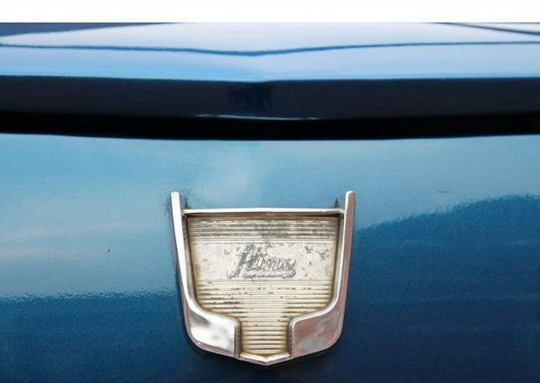



Hino Contessa 1300 Coupé
The name Hino was taken from the homonymous town in the Tokyo prefecture where the company's headquarters were (and still are). His first steps were to create powerful military vehicles for the Imperial Japanese Army during World War II. Once the greatest war of all time was over, it dedicated itself to the manufacture of diesel engines, trucks and buses. The post-war Japanese automobile industry underwent a major transformation thanks to the numerous agreements that many manufacturers made with car brands in Europe and the United States. Hino was no different. The operations were going from strength to strength, they had already earned an important place in the industry and even theirs was the first trolleybus in the history of Japan. The brand wanted to expand its business by launching into the world of passenger cars. Already under the name of Hino Motors, it signed a collaboration agreement with Renault in February 1953 and two months later they began to manufacture the Renault 4CV (also called Renault 4/4) under license. In Japan it was marketed as the Hino PA and some 35,000 units were sold in the 10 years it was in production. The French brand ceased production of the Renault 4CV in 1961, so Hino set out to take another step in the automotive world: manufacture its own car. They contacted the prolific Italian designer Giovanni Michelotti, who had worked with brands as relevant as Ferrari, Lancia, Maserati, Alpine or Triumph, to draw the silhouette of the new Japanese car.
The Hino Contessa 900 used the base of the Renault 4CV but at first glance no one could recognize that link due to the charming sedan body designed by the Turin designer. Renault's 35 hp 0.9-litre engine was positioned at the rear and was sufficient to animate the rear axle with the 750 kg that the car weighed. Shortly after, the Hino Contessa 900 Sprint was launched, a coupe version that reduced the weight by 100 kg and had an engine powered by Nardi up to 45 CV. With an attractive design, greater habitability -it offered space for five passengers, one seat more than the 4CV- and the proven reliability of its engine, it was not surprising that the Contessa achieved good sales results. 47,299 units were marketed between 1961 and 1964, a small part of them manufactured beyond the Japanese borders. The great reception in the market of its first car encouraged Hino to develop the second generation. Once again, Michelotti was in charge of its design, who had an overwhelming personality. The front with double optics and no grille was clearly reminiscent of the Chevrolet Corvair while the general lines were similar to other models designed by Michelotti such as the Triumph 2000. The Italian designer had been inspired by the English and American cars for this Japanese model with a French engine. Long live globalization! The Hino Contessa 1300 was bigger and heavier than its predecessor, but also more powerful by using a 1.3-liter 55 hp engine from the Renault 8. It began its commercial journey in 1964 and a few months later the sports version with bodywork arrived. two-door, the Contessa 1300 Coupé with 65 CV. The second generation of the Contessa was exported to several countries around the world, being manufactured in Japan, Israel and New Zealand.
80 notes
·
View notes
Photo

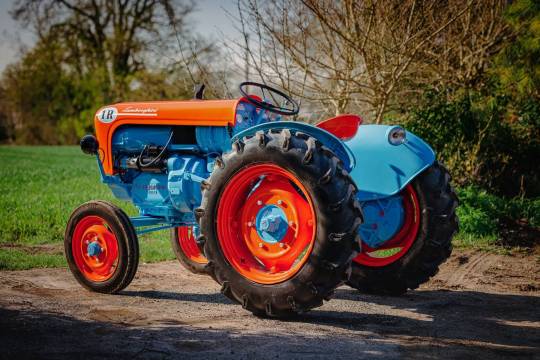
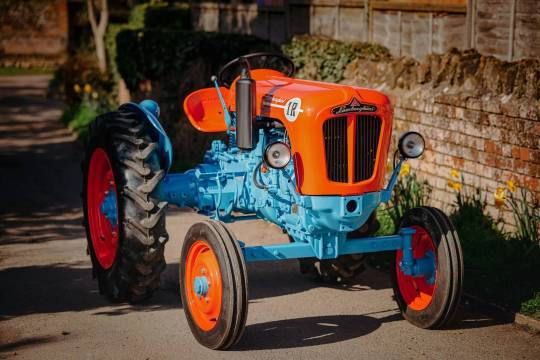
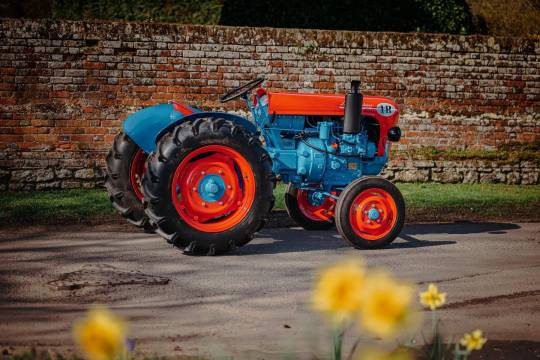
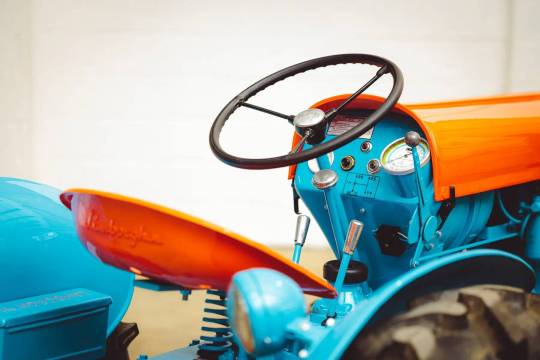

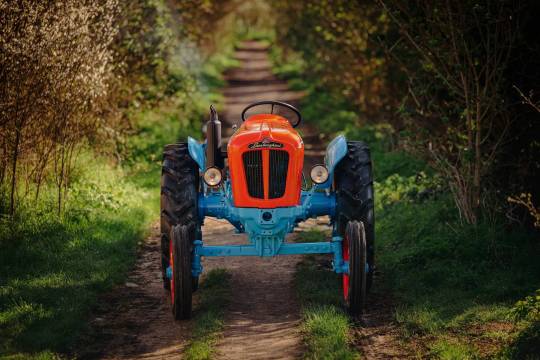
1964 Lamborghini 1R tractor !
It’s kind of hard to imagine today, but there was a time when the Raging Bull wasn’t known for building supercars. Decades before the iconic Countach was even a concept, Ferruccio Lamborghini got his start building tractors.
Italy was trying to rebuild itself after the World War II, and the businessman saw an opportunity. In 1948, he started Lamborghini Trattori, a company that soon became one of the country’s biggest agricultural equipment manufacturers.
The business, which is still in operation to this day, was so fruitful that Lamborghini was eventually able to turn his attention to his true passion, high-performance sports cars, by the middle of the 1960s.
Lamborghini’s first tractors were made using spare military vehicle parts, but by this point, the company was producing finely tuned machines. The 1R was the company’s best-selling model during this period and was powered by an air-cooled 1.5-liter twin-cylinder diesel engine that produced a whopping 26 hp.
The tractor sports a stunning blue-and-orange paint job that looks more like something you’d see at an exotic car show than on a farm. This particular 1R was once part of a Lamborghini family friend’s collection and was recently restored by Garage961, the only tractor restorer officially sanctioned by the Museo Ferruccio Lamborghini.
Courtesy: Bonhams
#art#design#tractor#ragging bull#lambo#lamborghini#lamborghini 1R#agriculture#garage961#restauration#blue#orange#fun#collectors#ferrrucio lamborghini#machine#trattori#italy#1964#bonhams
78 notes
·
View notes
Text
Cars Headcanon Drabbles: Doc Hudson
What follows is a summary of Doc's pre-racing life for a fanfiction I'm working on. I tried my best to work in existing canon where applicable. Enjoy!

Samuel James "Hudson" Longhauler Jr. (factory designation HH19512C308CU11211937: Cycle 9, Rotation 152, Batch 1A)--known as "Doc" Hudson to the denizens of Radiator Springs, or just "Hud" to his friends and loved ones--is a three-time, Piston Cup champion whom raced under the moniker "the Fabulous Hudson Hornet" between 1951 and 1954. He was sired by Diesel O'Twill and Annette Elizabeth Longhauler nee Glenrunner, despite the latter being married to Samuel Joseph Longhauler at the time. He was manufactured at the Hudson Motor Car Company Factory in Detroit, Michigan on 11/21/1937, and is modeled in the likeness of an Old World 1951 Hudson Hornet club coupe.
Hud grew up in Dawsonville, Georgia (a small-town northeast of Atlanta). His mother began teaching him internal combustion at four as he had a natural talent for engines, and a keen eye for catching ailments before they became big problems. His grandfather and his uncles also taught him how to make moonshine, something that he'd take advantage of when he was older.
Hud was highly intelligent…probably one of the smartest kids in town…but restless. He would quickly master any topic that he felt was relevant to him…and then check out. As a student, he skipped classes that didn’t interest him, and he was constantly being sent to the principal’s office for arguing with his teachers. He loved mechanical engineering, and could spend hours tearing apart various types of engines and cadaver parts to figure out how they worked…but the chaotic environment of the garage was too overwhelming, so he began to spend more and more time causing trouble with his friends, and exploring the woods around Dawsonville.
During Hud’s seventh-year growth spurt his adolescent two-cylinder engine grew into an in-line four capable of putting out 120 horsepower. He was in a league of his own, and he began to sneak out at night, racing the logging roads, and wreaking havoc around town. By the time he was nine, Hud had served hundreds of hours of community service as reparations for various offenses including, but not limited to, reckless driving, petty theft, ethanol possession with intent to sell, disturbing the peace, vandalism, and trespassing. His family tried to talk sense into him, but the only person who could seemingly get through was his mother, and even then, she could barely keep him in line.
In October of '47, he stumbled across a group of whiskey trippers hiding out in the woods north of Dawsonville. The trippers mistook Hud for a cop…and almost killed him…but he managed to convince their leader, an Oldsmobile named "Ghost," that he was just a curious kid. They apologized, and invited him to rest at their camp…but unbeknownst to everyone, the local police and the ATF had both been tipped off about the gang's whereabouts…and were closing in. Fortunately for the trippers, Hud knew the farm and logging roads better than he knew his own family, and with his guidance, he and the the gang managed to evade the police, pausing to catch their breath well south of town. Hud knew if he returned to Dawsonville, he’d have to explain himself to the town sheriff--who had been a part of the chase--and his family…and he couldn’t guarantee that his family’s reputation would keep him out of jail…so he decided to follow Ghost to Thomasville where he became a full member of the Still Chasers under the employ of a mechanic, and AARC team owner, named Smokey.
In May of '50, Smokey found himself in a bind when his primary driver was injured before an important race. With all of his alts out for various reasons, Smokey was desperate, going so far as to offer a rare favor if Ghost could help him out. Ghost volunteered Hud. Initially, the thirteen-year-old coupe was un-enthused, but Ghost persuaded him to race. Despite finishing fifth, Hud impressed Smokey so much that he offered him a spot on his team, and Hud would leave the Still Chasers so that he could spend the rest of the year training. In 1951, Hud would go on to claim thirteen wins AND the championship title. He would win additional champion titles in 52’ and 53’, and amass an unprecedented 65 victories through the 54’ season…though that one would be cut short by a near fatal wreck during the Fireball Beach 350. It took a full year for Hud to get put back together, and he went back to Thomasville expecting a big welcome…but was shocked to discover that the new team owners (Smokey sold the team in 53’) had replaced Hud with a younger, faster car.
Hud’s world shattered. He felt betrayed by Smokey, thinking that, as team 51's crew chief, he would have been part of the decision to have Hud replaced. In truth, Smokey had never been consulted and would ultimately resign from the team in protest.
Hud tried reaching out to Ghost...but it was like his friend had vanished off the face of the Earth. He assumed that Ghost had written him off after his accident, when in reality, the tripper had been killed by the ATF in 54'.
He called the garage, hoping to talk to his mother…but ended up getting his uncle James…who told him about how the ATF locked down Dawsonville the night he disappeared, tearing apart his home and the family garage trying to find him. But instead of finding him, they found his grandfather's still. His grandfather and his uncles were arrested, and Hud's mother worked herself near to death trying to keep the business afloat with only Sam to help her...and her health never recovered. James angrily blamed Hud for everything, told him to not bother coming home, and hung up on him. What Hud didn’t know was that his grandfather had heard the last part of the conversation and tried to call him back…but Hud was already on his way out of town, heartbroken.
Not knowing what to do or where to go, he drove to Detroit, hoping to either disappear into obscurity, or start over. Unfortunately for him, he wasn’t able to do either. No matter where he went, people kept asking for autographs, or challenging him to races… and even hiding behind a contemporary paint job couldn’t save him the pain of having to think about what he lost in Thomasville. He would eventually leave Detroit and head west, taking in the sights of Route 66. He helped out a stranded car in Carburetor County, Arizona, and in so doing stumbled upon a series of oddly ironic billboards. Curious, he followed them to the Mechanical School of Carburetor County and, with no other options available, enrolled in classes to become a Doctor of Internal Combustion. He finished at the top of his class, and with a newfound sense of purpose swelling in is engine, used the money that he'd made racing to open a clinic in the nearby town of Radiator Springs.
Additional factoids:
He resented his father, Sam, for being away from the house so much, and part of his acting out as a kid was in the hopes that it would encourage Sam to take a more active role in raising him.
He never knew that Ghost was his sire until after he mended bridges with Smokey. He technically has a half-sister, though Ghost, whom he's completely ignorant of.
He was unabashedly gay, and something of a primadonna in his early adult years. When the Still Chasers were in town for some R&R, he would don an opulent paint job--usually some shade of blue--with expensive, white-wall tires...and then head on over to the nearest bar to drink and socialize.
He gave himself the nickname "The Fabulous Hudson Hornet" after getting separated from the rest of the Still Chasers outside of Jacksonville, FL and somehow managing to evade an entire ATF task force and police from three, separate counties.
He had a friends-with-benefits-esque relationship with Sheriff until his passing in '09.
He had degrees in Clinical Aerodynamics and Internal Hydraulics in addition to his Doctorate in Internal Combustion.
With Lightning's support, he would eventually find, and make amends with, his surviving family members (his grandfather and his uncle James).
Loved 1960’s rock and roll.
Young Hud's theme song:
youtube
#cars 2006#cars pixar#cars#cars fandom#disney cars#cars movie#pixar cars#doc hudson#hudson hornet#cars headcanons#sherdoc#lightning mcqueen#cars fanfiction#Doc Hudson#fabulous hudson hornet
11 notes
·
View notes
Text
Driving Innovation: The Evolution of Fuel Pump Test Benches
In the intricate world of automotive engineering, the development of fuel pumps stands as a testament to the marriage of theory and practice. At the heart of this endeavor lie pump testers and fuel pump test bench, sophisticated tools that bridge the gap between theoretical designs and real-world performance.
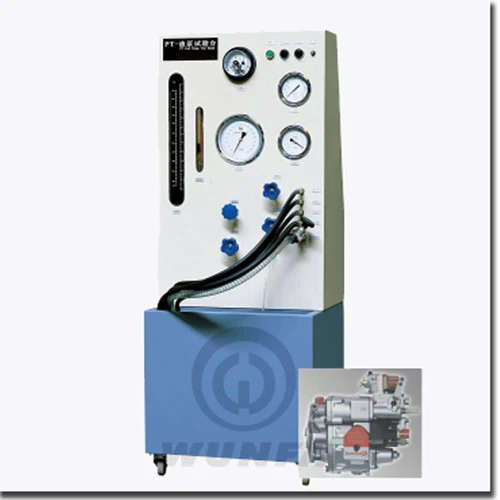
Fuel pump test bench serve as the proving ground for innovative fuel pump designs. These specialized platforms provide engineers with the means to subject fuel pumps to a battery of tests, simulating a wide range of operating conditions and performance parameters. By meticulously analyzing the data gathered from these tests, engineers can fine-tune their designs, optimize performance, and ensure reliability under diverse circumstances.
Pump testers play a pivotal role in this process, serving as the interface between theory and practice. These precision instruments are tasked with evaluating the performance characteristics of fuel pumps, measuring variables such as flow rate, pressure, and efficiency with unparalleled accuracy. By providing real-time feedback on pump performance, pump tester enable engineers to iterate on their designs rapidly, identifying areas for improvement and refining their solutions iteratively.
One of the key advantages of pump tester is their ability to replicate real-world conditions with precision. Whether it's simulating extreme temperatures, varying fuel compositions, or fluctuating demand levels, pump testers can recreate the complex operating environments that fuel pumps encounter on the road. This level of fidelity allows engineers to validate their designs comprehensively, ensuring that they meet the stringent demands of modern automotive applications.

Furthermore, pump testers facilitate collaboration between different stakeholders involved in fuel pump development. From design engineers to quality assurance teams, these testers provide a common platform for communication and evaluation, fostering synergy and streamlining the development process.
In conclusion, pump testers and fuel pump test bench represent the nexus of theory and practice in automotive engineering. By leveraging these advanced tools, engineers can transform conceptual designs into reliable, high-performance fuel pumps that drive innovation and propel the automotive industry forward.
#diesel engine parts#engine parts#common rail test bench#diesel engine parts manufacturer#test bench#denso valve#pizo valve#remanufacture injector#delivery valve#bosch injector#Fuel Pump Test Benches#Test Benches
0 notes
Note
hi hazel!
i know this is probably annoying to ask so extremely sorry about this in advance but i’ve been seeing this debate on twitter and it’s so conflicting and I can’t pretend to know enough to understand what people mean by it.
max and christian horner had their opinions that came out about the 2026 engine regulations (as did Damon Hill, Karun and Alex Brundle) and i know they weren’t the most positive. I’ve seen BrrrakeF1’s opinion of it isn’t great either. but i’ve also seen some tweets from others that the regs aren’t bad. (i haven’t really seen any other team mention anything about the 2026 regs except redbull and maybe toto said something)
so are they bad? or good? i know it’s not as simple as that, of course but there seems to be a bit of a fight brewing around this now which i wasn’t actually aware of before.
I think the main problem is that 2026 is effectively tomorrow, in terms of developing a completely new power unit concept and that some ambiguities and potential changes are still in the works.
(this got long)
(also this is not an annoying ask anon! I actually know about power units haha - it's the wag stuff I don't know anything about)
2026 moves to 50-50 internal combustion and electrical power to the drivetrain. That is a big shift from the current hybrid systems, which are somewhere around 8-11% electric power. That's not an exact number; the overall output of an ICE and of course the hybrid system is both down to how efficiently it's running and any constraints on its performance (needing to run the ICE lower for reliability etc) as well as a regulatory maximum of 120kW contribution from the motor.
But it's somewhere, ideally, around there. At most tracks, obviously some of them like Monaco there's less call for maximum power output but you get the idea, it's going to be a big shift.
There are lots of other changes, in how that number is got to; MGU-H is going, which is a pretty uncontested idea. MGU-H is (basically, I'm oversimplifying but) a turbine that runs off exhaust gases and given that, of course only applies to hot-running petrol/diesel combustion engines.*
That's not a technology that's either practical for road cars or the direction that OEMs are taking development in, as well as being expensive and complicated. It was repeatedly cited by manufacturers as a reason not to come back or join F1, so removing it was a done deal.
MGU-K is a non-negotiable part of a hybrid system, it's the part of the powertrain that recovers energy from braking but is also the motor, like in an electric car. Nothing goes to the drivetrain from the electric parts without MGU-K, so that was of course staying and the increased importance of it comes with the development of motors for EVs. Especially recovery systems from braking and lift/coast for range extension.
With that, you need a battery and an inverter and a control system, etc. The scale-up of that to be a larger percentage of the overall power does add weight to the overall power unit and there isn't a way around that, although cars will also be lighter (at race start) due to lower fuel loads.
(worth saying that F1 is currently heavier, at full fuel load, than Formula E; trying to have both is in some ways the worst option)
None of that is really bad or good or what's being argued over, which is a second set of regulations around active aero. In order to compensate for the cars being heavier, in theory at least, the bodywork will actively shift to reduce drag on straights. Like DRS but in a more complex, whole-car way.
"Wait, that sounds insane and also like it would need lots of additional wiring and movement systems to engineer" yea.
I personally think it's a driver aide, if it's not entirely controlled by the driver and also that it's unnecessary. The 919 LMP1-H ran at close to 50% electric energy a lot of the time and it only had a few different aero configurations for the year, let alone a lap.
The active bodywork will need to work closely with the PU, which of course is always the case with a car's bodywork; airflow and cooling the power unit (or even just a pure combustion engine, which of course literally needs to breathe) are essential parts of making a car efficient. But this is more than packaging, it's that parts of the chassis will need to respond to the same ECU as the power unit.
And none of that is really clarified yet. Which given the development lead times is a huge problem. So: it's not that the regulations are good or bad yet, per se it's that they are not yet settled.
*Differentiating between hot and cold running because race cars obviously run like blast furnaces compared to a road car, even if you compared two V6s. But also because if you were to apply MGU-H to, for instance, a hydrogen combustion engine, then it would be very inefficient and not generate anything because of the different exhaust outputs.
25 notes
·
View notes
Text
Original Character Day !?
...I want to talk about 2 engines that are very important to me! They're both Union Pacific engines and coincidentally both are centennials! In a way I am very similar to a centennial engine but also a GTEL... im like.. a streamlined centennial but hell of a lot faster than they ever were!
I guess to everyone, people from alter's pasts can be considered 'original characters' but to me they're people I knew/know! There's so many other rolling stock that I could talk about but we would be here for days!!!
Golden Spike, Union Pacific Centennial #6900


Golden Spike was the first centennial manufactured and he was present at the 100th anniversary of the Yardmaster at the Union Pacific Bailey classification yard. He was always the most well-taken care of when it came to centennials. He worked pulling fast freight...for such big freight engines the centennials were pretty fast...
Every ten years, Union Pacific tried to make a partner for him but they kept making coaches for him the first 4 times, which he accepted to be part of his Limited special passenger train but not as a partner to be 'coupled' with. On the 5th try, the company made me.. He was my first partner in my life. I was manufactured with him in mind so in a way.. I'll always be his. He mentored me and made sure i was fit and ready to take over half of the yard with him.
He was so important and integral to me that...it's such a shame that he's only in my memories and no one else really knows fully about him. I guess it is a blessing.. I would hate to see people write him badly because he's incredibly dear to me..
_____
Rail Jack, Union Pacific Centennial #6936


@rail-jack In this life. He's my soother and is the only rolling stock in my system that shares any bit of my past life...he's a good person to ask questions if you want to know more about the version of the world.
In his past life he was built for the second batch of centennials. He worked hard like all other centennials but as the others failed or wore down, he would be repaired with their pieces and eventually became an..amalgation of his model-mates.
He worked as a diesel 'babysitter' for 844 and other steam engines. lighting their flames in the mornings. With 844, he would help on excursions with his dynamic brakes and they were boyfriends. On occasions he would pull a passenger train or even full freight trains with a few other diesels. When he wasn't pulling trains, he was a supervisor for a section of the freight due to his decades of experience. It is funny that he used to hate steam engines, the introduction of their model was the end of steam engines, even the big boys.. but he eventually fell in love specifically with big freight steam engines.
6 notes
·
View notes
Note
I want a w123 diesel wagon so bad. Slow as molasses, but completely indestructible. Wagons are big time price inflated, sadly, but the sedans aren’t bad. W126 diesel is also solidly affordable, although you’ve gotta embrace needless Germanic complexity and do your own preventative maintenance. Pre-1990 ducks most/all of the electronic gizmos that fuck up newer euro cars tho. And you get pleasing amber & green lights and a nothing but knobs and buttons. gonna start stashin cash tbh
I will have a rare moment of fairness and say that German cars while absolutely more complex than necessary are not really that bad for maintenance and not actually overengineered. What kills German cars is that they are the diametric opposite of American design philosophy which is to say they have incredibly tight engineering and manufacturing requirements; why this matters is when they started to build them outside Germany for foreign markets they started to fail way more and way worse and are not very good with aftermarket parts. This is why "Euro" cars (frankly German cars are all we really get in NDM) have the reputation of being overly-complex or hard to repair.
It is incredibly foolish and absolutely self-inflicted which is unfortunate because German automakers have unquestionably pushed technological progress way more than almost any other. This is why I maintain my strong anti-German-car stance, because it's dumb. I actually feel that German vehicles are some of the best at least on paper. If I were in the EDM I would probably prefer them to most anything else tbqh. Or in the old days where they literally did ship German made cars over here, which is why they got the luxury reputation all those decades ago to begin with.
Anyways live your truth brother, quest for the unkillable MB wagon!
#anon#frankly if I got a euro car I would pay to import one from a euro factory myself#but their hubris and the meems is why I rank JP > US/FR/IT > RU > EU
3 notes
·
View notes
Text
Taking a break from maintenance, which I do every Wednesday, to explain something since I was chatting with my co-workers and figured out how to put it in layman's terms!
Most people who like trains are aware that it takes multiple diesel units to pull really long freight trains. They also pull these trains really slowly when they're really long. A big part of the switch from steam to diesel for these sort of things is due to their thermal efficiency - diesel locomotives are usually somewhere around 30%-40% thermal efficient, whilst the average steam locomotive was closer to 8%-9%. This means that steam locomotives went through more fuel - up to six to eight times more fuel. If you're pulling a mile-long train, you want to find the most efficient way to do that, and combined with their lower repair and maintenance costs, most railroads finished that switch by the end of the 1950s.
Now, that said, the thing with diesels is that their horsepower is more consistent. They run with internal combustion engines, like your car does. You can generally expect the same horsepower output out of them day to day, even as you open the throttle more. As an example, the famed EMD GP40-based passenger locomotives are usually rated for something like 2000-3000 HP, and their freight counterparts were consistent at around 3000 HP. The F40PH, a passenger locomotive, can get up to 3200 HP.
Modern diesels and diesel-electrics have even more power - Bombardier's ALP-45DPs, one of which I'm looking at in the yard right now, are rated thusly:


Both the power output and the tractive effort, which basically translates in layman's terms to "how much can this locomotive push or pull," are higher for electric than diesel. You'd think that this would mean a push for more railroad electrification, but...well, you probably know why cleaner forms of energy don't get used by now, so I won't get into that.
Now, for comparison, let's look at some steam locomotives. This is Nickel Plate Road 765, a 2-8-4 Berkshire built in 1944:

When you think about it, those numbers really aren't too different! By the 1940s, steam technology was really at the best it had ever been (superpowered steam). When they started testing diesels en masse, it was actually found that performance-wise, the locomotives more or less kept pace with each other. Ultimately, the diesels won out because they were easier to mass manufacture, were cheaper to maintain, and could be operated by one person (not recommended, safety first!). You can hook multiple diesels up to each other and operate them from the one in the front, whereas if you doublehead steam locomotives you need a crew to operate each one. So yeah, it was a cost-saving measure, ultimately, because executives are like that.
Just for fun, let's look at the Big Boys for a second, though.

Yeah, you're not gonna beat those numbers. Union Pacific's Big Boys were some of the most powerful machines ever built. Those mile-long freights that you see three or four diesels on? A Big Boy could pull those by itself without breaking a sweat.
But if the horsepower and tractive efforts come across mostly the same, why do steam locomotives appear to be able to pull more weight? It's all about how steam power actually works.
A diesel engine, as mentioned above, will have fairly consistent horsepower outputs. Steam locomotives take a bit more to get going, and you have to start pulling heavy loads slowly because of potential wheel slip. But once you get moving...that seems to change.
Here's a great story from Rich Melvin, who was the engineer of NKP 765 until he retired several years ago:
youtube
Now, in the comments of this video, I found someone explaining this really well:

Basically, the harder you work a steam locomotive, the closer it gets to its actual peak power output. The more you open up the throttle, the more fuel you have to add to the fire, and in turn, the hotter the fire gets. This means the steam in the superheater is actually drier, and that means that it expands more. So you can use less steam per stroke that way, and that means you can really get up to using your full power.
A diesel will have an easier job starting to pull, because they're great for getting those things moving. But if you have it running at higher speeds, the steam locomotive will have an easier time pulling it from that point.
So there you go.
3 notes
·
View notes
Text
HR TOOLS AND ENGINEERING, located in Kanpur, is a leading power tools supplier and manufacturer, providing top-notch professional tools since its establishment in 2018. In just four years, we have made tremendous strides in the industry by consistently innovating and pursuing quality. Our unwavering commitment to excellence has earned us an enviable reputation and a strong foundation in the market.
We specialize in providing quality products in Power Tools, Abrasives, Industrial Abrasives, Diamond Tools, Hand Tools, Hardware Tools, Construction Tools, Industries Tools, Garden Tools, Garden Supplies, Yard Equipment, Water Pumps, Diesel and Gasoline Engines, Car Engines, and much more. Our extensive range of hardware accessories and tools includes three brands: Bose Power, Dice, and Tri-Circle.
HRtools offers a wide range of power tools, including abrasive tools, construction tools, and garden tools, under the brand name Bose Power. The tools are designed to deliver unparalleled performance in terms of speed, work results, and preciseness. The brand also offers water pumpsets, saw blades, rice mill parts, drill bits & chisels, petrol engines, demolition hammers, jigsaws, chain-saws, cut-off machines, rotary hammers, electric planers, power impact drills, drill machines, and marble cutters. With Bose Power tools, you can increase your flexibility, reduce costs, and improve overall effectiveness in your work. If you are seeking perfection in your work, trust the Bose Power brand to deliver the highest quality tools.
The tools offered by Tri-Circle and Bose Power are top-notch and can cater to the needs of professionals across various industries. These power tools and abrasive tools are designed to be reliable and efficient, making them suitable for construction, gardening, and other tasks. Some of the popular electric tools offered by these brands include electric planers, impact drills, drill machines, and marble cutters. For heavy-duty tasks, an angle grinder, gasoline chain-saw, or rotary hammer from these brands could come in handy. In summary, Tri-Circle and Bose Power offer a comprehensive range of high-quality tools that professionals can rely on.
Dice, a brand within HRtools, offers a range of tools including power tools, abrasive tools, construction tools, and garden tools. With moderate quality ratings, our tools are designed to provide efficiency without breaking the bank. Our customers can access a wide variety of tools, including diamond saw blades, demolition hammers, marble cutters, and angle grinders, all at an affordable price. At Dice, we believe in empowering our customers to achieve their goals and succeed in their endeavours, no matter the project or task at hand.
At HR TOOLS AND ENGINEERING, we also specialise in providing a range of industrial abrasives that are suitable for various industries. We understand the importance of quality abrasives in industries, and therefore we provide only the best industrial abrasives to our customers.
In addition to our excellent range of products, we also provide after-sales services and support to our customers. We have a team of experts who are always available to help our customers with any issues they may face with our products.
In summary, HR TOOLS AND ENGINEERING is a reliable power tools manufacturer and supplier, providing high-quality tools and accessories to various industries. With our commitment to quality and innovation, we have established ourselves as a trusted and reputable brand in the market.
#power tools#power tools suppliers#power tools manufacturer#abrasives#abrasive tools#industrial abrasives#hands tools#hardware tools#construction tools#industries tools#hardware accessories#garden tools#garden supplies#yard equipment#water pumps#diesel and gasoline engines#gasoline engines#diesel engines#car engine parts
1 note
·
View note